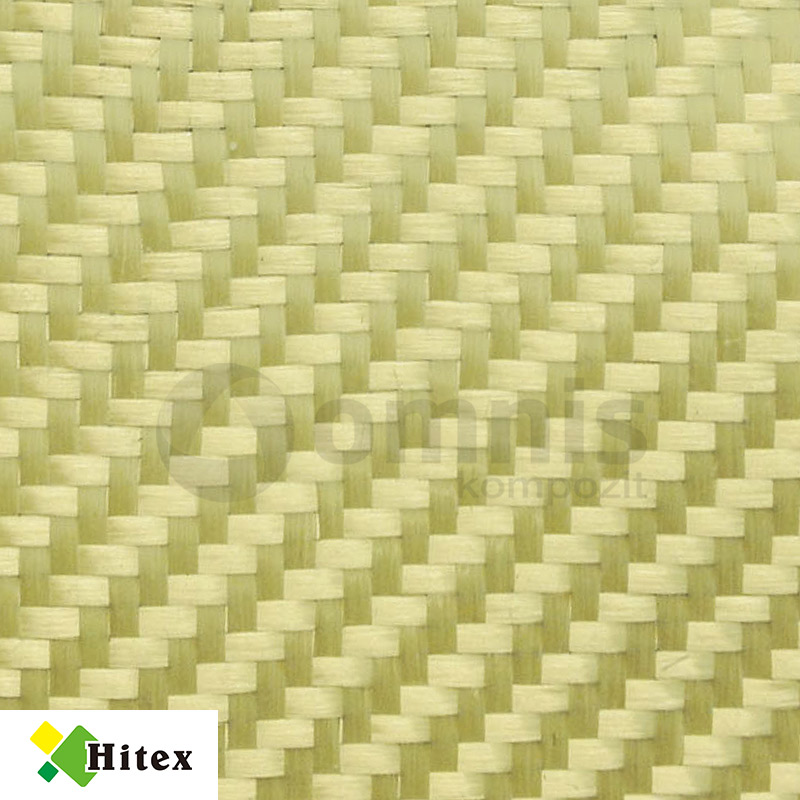Aramid Fiber Reinforcements
Aramid is a synthetic material known for its outstanding strength and heat resistance. This high-performance fiber is characterized by a unique blend of durability, flexibility, and resistance to abrasion and chemicals. Constructed from long chains of synthetic polyamide with a significant percentage of amide bonds directly attached to aromatic rings, this structure endows the fiber with distinctive properties. It's an ideal choice for various applications, including ballistic protection, aerospace, automotive components, and sports equipment, maintaining integrity and performance under extreme conditions.
How is aramid fiber produced?
The production of this fiber involves a complex chemical process called polymerization, reacting specific chemicals to form long polyamide chains that include aromatic rings. The process includes spinning a liquid crystalline polymer solution through a spinneret, turning it into solid fibers through cooling and stretching phases that align the molecular chains. The fibers are then washed, dried, and wound onto spools. By meticulously controlling production parameters, fibers with different levels of tensile strength, flexibility, and thermal stability are created, meeting the diverse needs of various applications.
What are the main advantages of using aramid fiber reinforcements?
One of the main advantages of utilizing this synthetic reinforcement is its exceptional strength-to-weight ratio, superior resistance to abrasion and impact, and outstanding thermal stability. It is significantly lighter than other reinforcement materials but offers comparable or superior strength, making it perfect for applications where reducing weight without compromising performance is crucial. High tensile strength and modulus enhance the durability and toughness of composites. Additionally, it performs excellent resistance to heat and flame, essential for aerospace, automotive, and industrial applications.
How do aramid fiber reinforcements compare to carbon fiber reinforcements?
Comparing this synthetic reinforcement to carbon fiber, each has unique benefits tailored to specific needs. Aramid fibers features impact resistance, flexibility, and vibration damping, ideal for applications requiring energy absorption and resilience, such as ballistic armor and protective gear. Carbon fiber provides superior stiffness, strength, and thermal conductivity, suitable for structural components demanding high rigidity and minimal weight. Although carbon offers higher tensile strength and stiffness, the synthetic option is preferred for its toughness and resistance to fatigue.
Types of aramid fibres and what applications are meta and para aramid fibers most commonly used?
Commonly, para aramid fibers are used in applications demanding high strength, durability, and such as ballistic body armor, helmets, aerospace components, marine hulls, sports equipment, and high-performance automotive parts. Whereas meta aramid fibers mostly employed in manufacturing fire-resistant clothing, ropes, and cables due to its excellent flame retardancy and heat resistance, making it a critical material in industries prioritizing thermal stability, safety and performance.
Can aramid fiber reinforcements be used in high-temperature environments?
Yes, meta aramids can be used in high-temperature environments thanks to its excellent thermal stability and resistance to degradation at high temperatures. It maintains its strength and flexibility across a wide temperature range, suitable for aerospace, automotive, and industrial applications exposed to high heat. Although not as heat-resistant as some specialty fibers like ceramics, it offers a balanced mix of heat resistance, strength, and durability, meeting the requirements of many high-temperature applications.
What types of resins are compatible with aramid fiber reinforcements?
Aramid fiber reinforcements are compatible with a wide range of resin systems, including epoxy, vinyl ester, polyester, and phenolic resins. The choice of resin depends on the specific application requirements, such as mechanical properties, environmental resistance, and processing conditions. Epoxy resins are often preferred for their excellent adhesion, mechanical properties, and chemical resistance, making them suitable for high-performance composites. Vinyl ester and polyester resins offer a good balance of strength, durability, and cost-effectiveness for marine and automotive applications. Phenolic resins are chosen for their fire resistance in applications requiring high thermal stability.
How do aramid fiber reinforcements affect the strength and durability of composites?
Aramid fiber reinforcements significantly enhance the strength and durability of composites by providing high tensile strength, impact resistance, and excellent fatigue properties. The cohesion of aramid fibers into a composite matrix distributes loads more evenly, increasing the material’s overall structural integrity and resistance to cracking and abrasion. This reinforcement leads to composites that are not only strong and durable but also lightweight and capable of withstanding harsh environmental conditions, including high temperatures and chemical exposure. The unique properties of aramid fibers contribute for extending the lifespan of composite materials used in demanding applications.
How do I choose the right type of aramid fiber reinforcement for my project?
Choosing the right type of aramid fiber reinforcement for your project involves considering the specific performance requirements, including mechanical strength, impact resistance, thermal stability, and environmental exposure. Evaluate the application’s needs for flexibility, weight, and durability. For applications which require high impact resistance and energy absorption, such as ballistic protection, woven aramid fabrics may be ideal. For structural components needing a balance of strength and stiffness, unidirectional or multiaxial aramid fabrics might be more suitable. Consulting with material experts and conducting tests with different aramid fiber reinforcements can help determine the most appropriate type for achieving optimal performance in your specific application.




